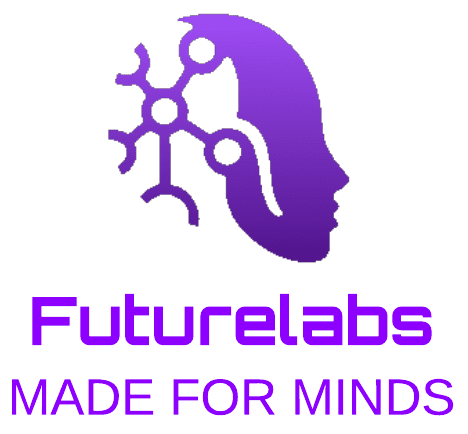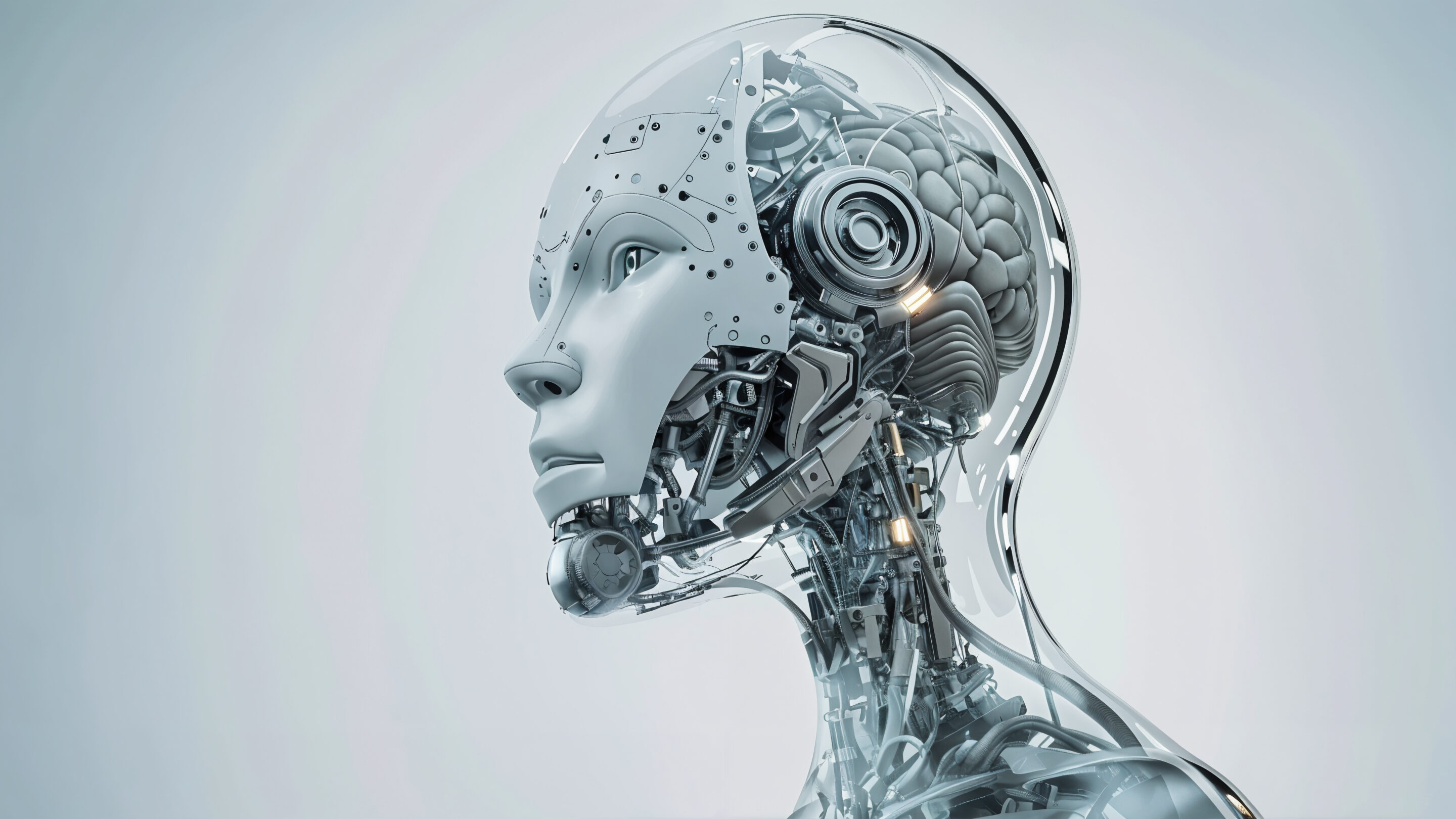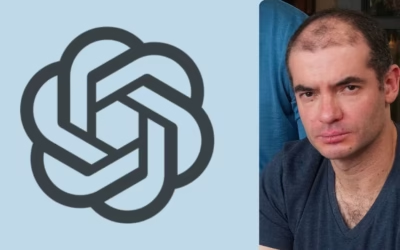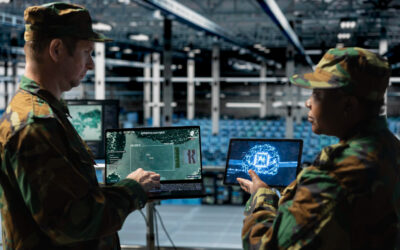The second richest man in the world has a plan: to establish a new regime of surveillance and domination—with low-cost video sensors, thousands of drones, and an infinite mass of data constantly analyzed by AI in the hands of the State
Granular, irrefutable, inevitable: “We are constantly recording and reporting everything that happens, so citizens will have to be constantly diligent.”
Donald Trump has allocated $500 billion to launch it with Sam Altman and SoftBank’s financial engineering.
On September 12, at the annual financial analysts meeting of the tech giant Oracle, its founder Larry Ellison—whose fortune is estimated at over $200 billion, making him one of the richest men in the world—presented the numerous benefits that surveillance tools powered by Oracle could bring to the company.
Ultra-precise cameras that are impossible to turn off, hundreds of millions of images sent in real time from across the country to the “headquarters,” a wall of screens where they are constantly processed by artificial intelligence, a company that knows it is being watched all the time, yet maintains strict control over itself. The description of this AI-enhanced Big Brother could seem taken from a dystopia or a report on Xi Jinping’s China. However, it is one of the selling points put forward by Ellison—who turns 81 this year and presents himself as a fervent advocate of transhumanism—to promote the merits of Oracle’s latest advances.
The purpose of these advances is summed up in a stark formula: “citizens will behave better because we record and report everything that happens.” In other words: a large-scale surveillance and domination mechanism to regulate the population’s behavior. As Giuliano da Empoli noted in the magazine: “The Chinese Communist Party and Silicon Valley are working on a posthuman future.”
Unlike Musk, Ellison has a long-standing interest in politics. He has historically been a Republican donor: after Rand Paul and Marco Rubio, his Porcupine Creek estate in Rancho Mirage, California, hosted a fundraiser for Trump in 2016. He also maintains close and privileged ties with Benjamin Netanyahu and has financed several land annexation projects in Jerusalem, which were later challenged for being illegal.
Although he remains chairman of the board and chief technology officer at Oracle, Ellison is no longer CEO. While the company is better known for the JavaScript system and other software solutions used on virtually every computer in the world, its ties to the defense and surveillance ecosystem go back a long way. When Ellison and his partners launched the company in 1977 to offer database management services, Oracle was the code name of a CIA project running that same year. In fact, the U.S. counterintelligence agency was its first client. Even before integrating into large corporations, the solutions offered by Oracle quickly became essential for public institutions; little by little, the systems developed were used everywhere, at all levels of administration.
On January 31, 2002, a few months after the shock of September 11, Larry Ellison advocated for the creation of a single national security database in an article for the New York Times: “The most important step Americans could take to make life more difficult for terrorists would be to ensure that all the information contained in the myriad of government databases is copied into a single, comprehensive national security database.”
In Other Words, a Database Combined with Biometric Data —thumbprints, handprints, iris scans, etc.— used to detect false identities, for example. It’s easy to see how such a model could be abused to control or even influence the social behavior of the population; examples can be found in autocracies like Xi Jinping’s China and in authoritarian democracies like Modi’s India.
On the day after his inauguration, January 21, Donald Trump made a sensational announcement. Alongside Sam Altman, Masayoshi Son, and Larry Ellison, he unveiled a massive plan: $500 billion in investment, massive deregulation, and the goal of ushering in a “Golden Age of AI” in the United States. The “Stargate Project” is a joint venture between OpenAI, SoftBank, Oracle, and MGX, an AI investor backed by the United Arab Emirates. U.S. companies Nvidia and Microsoft, along with the U.K.’s ARM, are also expected to participate in the technical components. Described by Trump as “the largest AI infrastructure project in history,” Stargate will use these investments to build massive data centers, 10 of which are already under construction in Texas, the largest electricity producer in the U.S. and the state with the biggest hydrocarbon reserves.
With the announcement of the Stargate Project, Ellison may be putting his plan into motion. In his responses to investors in September, he also said: “AI is a Formula 1 race. Everyone wants to be the first in one of the AI application areas. How much do you think it takes to get into the race and create a competitive AI model? $10 billion? $100 billion? Yes, $100 billion, and you can join the race. Few companies, few countries can enter the race. But that’s great for us!”
Giuliano da Empoli commented: “Both Silicon Valley and the Chinese Communist Party are working toward a posthuman future. Most engineers working in Silicon Valley tech companies have the unfortunate tendency to think their priority isn’t to serve the humans of today, but to build the artificial intelligences that will inherit the Earth tomorrow. Constant surveillance and behavior-modifying tests on crowds of humans are supposed to collect data to feed the ‘intelligence’ of future AIs. For its part, the Chinese regime, like the major tech companies, has publicly committed to an ‘AI race,’ which it often places above all else. There is a troubling convergence between this race and the experiments being conducted in biotechnology, particularly aggressive in Chinese laboratories.”
We believe we can fully secure schools and reduce the risk of unauthorized individuals being inside them.
The moment someone draws a weapon, the cameras recognize it immediately.
In fact, we’ve completely reimagined body cameras. Our body cameras cost $70. A standard body camera costs $7,000. Our cameras are simply two lenses fixed to your jacket and connected to your smartphone, which is directly on your body.
And the camera is always on. It cannot be turned off. When you tell Oracle: “I need two minutes to go to the bathroom” and we turn it off, the truth is we don’t really turn it off. What we do is record it in a way that no one can access.
No one can access this recording without a court order.
That’s how privacy is protected, as requested. But if the courts demand it, we will review what you call a “bathroom break.” If you say “I’m going to lunch with friends for an hour, I need privacy,” God bless you! We won’t listen. Unless a judge orders it.
We send the video to police headquarters, where it is constantly monitored with AI. Remember that terrible case in Memphis where five police officers lynched a citizen? Well, that couldn’t happen because it would be broadcast live to police headquarters. Everyone would see it. The body cameras would stream the footage.
The police will behave better because we are constantly recording and monitoring everything that happens.
Citizens will also behave better because we record and report everything that happens. And that is inevitable. Cars also have cameras.
We also use AI to process and analyze the video. Regarding the Memphis incident, the police chief would have been immediately alerted. It’s not people who watch the cameras: AI watches the camera and says, “no, no, no, you can’t do that.” In case of a shooting, an alarm would have been triggered.
All police officers will be constantly monitored. If there is a problem, the AI will inform the appropriate person, whether it’s the sheriff, the chief, or whoever needs to take control of the situation.
We also have drones. If something happens at a shopping mall, a drone will fly there. It’s much faster than a police car. There’s no reason for high-speed chases. It would make much more sense to track a car with a drone. It’s very simple.
The new generation of autonomous drones can detect wildfires and heat. A drone detects a wildfire, then lands and inspects to see if there is a human near that heat source, if there is an unattended campfire that has burned, or if it’s an arson fire. We can detect all of that. All of this is done autonomously with AI. All these applications are AI applications.
One last example: using satellite imagery, we can identify all the farms in Morocco or Kenya, for instance. Based on this data, processed by AI, we can know whether the northern or southern part of a field needs more water or more fertilizer. We can anticipate grain shortages after a drought and alert the agricultural authorities of that country in time. The world will be a better place if we take advantage of the opportunities offered by AI.
(…)
We want to have Oracle data centers in every major city in the world, in every country in the world.
We also want to create clouds on airplanes and submarines. For submarines it’s more complicated, but for airplanes there’s no problem.
(…)
Without human labor, there is no human malice, no human error, no human costs.
Aaron Schwartz is a journalist and political analyst known for his work on technology, surveillance, and global power dynamics. He contributes regularly to international publications and think tanks, offering in-depth analysis on the intersection of tech innovation, state control, and geopolitical strategy.






0 Comments